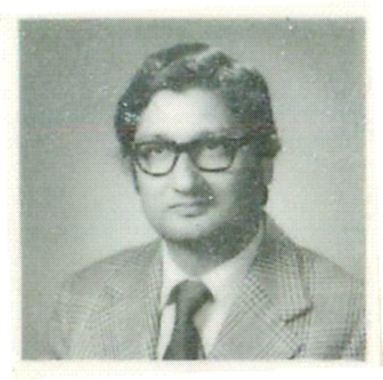Residence San Diego, US Nationality US, Canadian | Name Raj Pathria | |
 | ||
Born March 30, 1933 (age 92)
Ramdas near Amritsar, India ( 1933-03-30 ) Institutions University of Delhi
McMaster University
University of Alberta
Panjab University
University of Waterloo
University of Windsor
University of California at San Diego Alma mater Panjab University
University of Delhi Doctoral advisors F. C. Auluck
D. S. Kothari Education Panjab University, Chandigarh, University of Delhi Fields Mathematical physics, Statistical mechanics, Theory of relativity | ||
Raj Kumar Pathria (born March 30, 1933) is a theoretical physicist and an Urdu poet.
Contents
Pathria is known for his work on superfluidity in liquid helium, Lorentz transformation of thermodynamic quantities, a rigorous evaluation of lattice sums and finite-size effects in phase transitions.
Pathria is also the author of a graduate textbook, Statistical Mechanics, which has recently appeared in its third edition. He also wrote a book on relativity that has been published in a Dover edition.
Early life
Pathria was born in a middle-class Punjabi family to parents Ramji Das Pathria and Mela Devi Pathria. He received his early education in a local high school in Ramdas. He then joined the Hindu College.
Career
Pathria obtained his BSc Honours and MSc Honours degrees from Panjab University, Hoshiarpur in July 1953 and July 1954, respectively, and soon thereafter, at the invitation of Professor F.C. Auluck, joined the graduate school of Physics at the University of Delhi for his doctoral studies – which he completed in March 1957. In February 1958, he joined the University of Delhi as a lecturer in physics and in April 1961 got promoted to readership. In August 1964, he left Delhi to take up a visiting professorship at McMaster University in Canada.
Even though his field of research at the University of Delhi was primarily statistical mechanics, Pathria, during that time, got fascinated with the subject of relativity and in 1963, with the friendly cooperation of the Hindustan Publishing Corporation (India), produced a book entitled Theory of Relativity. This maiden attempt at book-writing resulted in fabulous reviews from far and wide, especially from Professor William McCrea – who himself was a celebrated author on this subject. In 1974, the Pergamon Press, Oxford produced a second edition of that book and in 2003 Dover Publications of New York took that book under their wings.
In Canada, Pathria continued his research in the diverse field of statistical mechanics; at the same time, he gave graduate courses on that subject at McMaster University, Hamilton and the University of Alberta, Edmonton. In 1967, he returned to India to take up professorship of theoretical physics at the Panjab University, Chandigarh, where (apart from conducting research in a variety of subjects in mathematical physics) he continued his mission teaching the fundamentals of statistical mechanics.
In 1969, Pathria returned to Canada and, in addition to his other academic pursuits, continued to teach a variety of courses at the University of Waterloo and the University of Windsor. In 1972 the Pergammon Press, Oxford, published his classic text Statistical Mechanics, which became an instant success on the international scene. In the early 1990s, when his new publishers (Butterworth-Heinemann) persuaded Pathria to produce a second edition of this text, he sought the help of Surjit Singh, a former student of his from the Chandigarh days (who had also been a postdoctoral fellow with him at Waterloo during 1983–87). The result of this joint effort was a brand new edition of this book that came out in July 1996 and, like its predecessor, continued to be a bestseller.
In between the last two events, Pathria retired from the University of Waterloo in August 1998 and, soon thereafter, moved to the west coast of the US and became an adjunct professor of physics at the University of California at San Diego – a position he continues to hold till today. In 2009, Pathria's newest publishers (Elsevier/Academic) prevailed upon him to produce a third edition of this book. He now sought the help of Paul Beale, of the University of Colorado at Boulder, whose co-authorship produced another brand new edition in March 2011.
Honours
Personal life
Pathria is married to a former student of his, Raj Kumari. They have two daughters and a son, as well as five grandchildren.
Pathria's hobbies are contemporary affairs and Urdu poetry. Right from his childhood, Pathria was nurtured in an atmosphere replete with Urdu language, Urdu idiom and Urdu poetry. Having read, and imbibed, dozens of classics emanating from stalwarts like Mir, Ghalib, Zauq, Momin, Hali, Dagh and Iqbal, down to modernists like AsGhar, Fani, Hasrat, Jigar, Firaq and Faiz, Pathria finally turned to writing Urdu poetry himself – but only around the year 1993, when he was close to retirement from physics.
Pathria – now pen-named 'Qais' (after the legendary lover of the Arabic woman Laila) – is now known for his latest compilation of Urdu Ghazals entitled Saihraa Saihraa, which was published by M.R. Publications of Daryaganj, New Delhi, towards the end of 2005.
